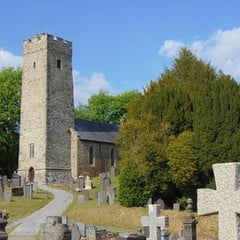
What's in a name? Llan
What's in a name?
When it comes to places in Wales, quite a lot as it happens.
Welsh place-names are often descriptive of geography and landscape or identify specific buildings, features or individuals.
This is particularly true of towns, villages and hamlets which grew up around a church or chapel.
Of the 600-plus named places in Pembrokeshire, Carmarthenshire and Ceredigion, more than 100 refer to a place of worship in their name.
However, while church – eglwys – and chapel – capel – can be found in numerous place-names in west Wales – such as Eglwyswrw in Pembrokeshire or Capel Seion and Capel Dewi in Ceredigion and Carmarthenshire – there is one word that appears in many, many place-names across the three counties, and Wales as a whole.
The prefix Llan appears in no less than 80 west Wales place-names, from Llandeloy and Llanddewi Velfrey in Pembrokeshire to Llandysul and Llanbadarn Fawr in Ceredigion and Llansteffan, Llandeilo and Llanpumsaint in Carmarthenshire.

St Luke's Church, Llanllwni, Carmarthenshire
Many mistakenly assume that Llan is simply another word for church, but originally it actually meant an enclosure, and particularly the sacred land around a church, such as a churchyard. Over time it came to mean the wider vicinity surrounding a religious building.
As a geographical prefix, Llan is often followed by the name of the saint to whom the church is dedicated, such as Llanddewi – St David, Llanelli – St Eli, Llandysul – St Tysul, Llandeilo – St Teilo, or Llanfihangel – St Michael.
As well as naming saints, Llan can also be a prefix to a geographical feature, such as Llangwm in Pembrokeshire – valley of the church, Llangoedmor in Ceredigion – church in the big wood, or Llanllwch in Carmarthenshire – church at the swamp or lake.
At Llanllwni in Carmarthenshire (pictured), the stunning 16th century church built in honour of the Welsh saint, St Llwni, was later rededicated to St Luke.

